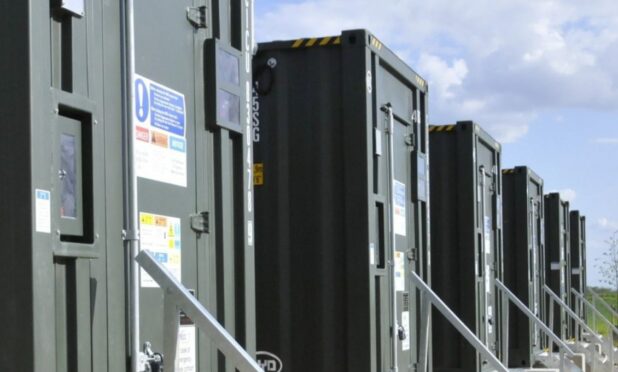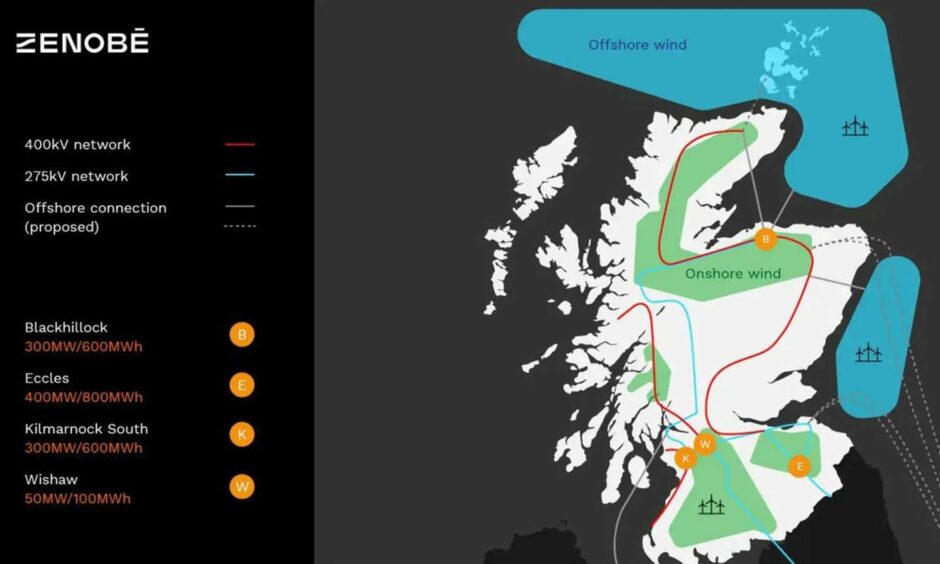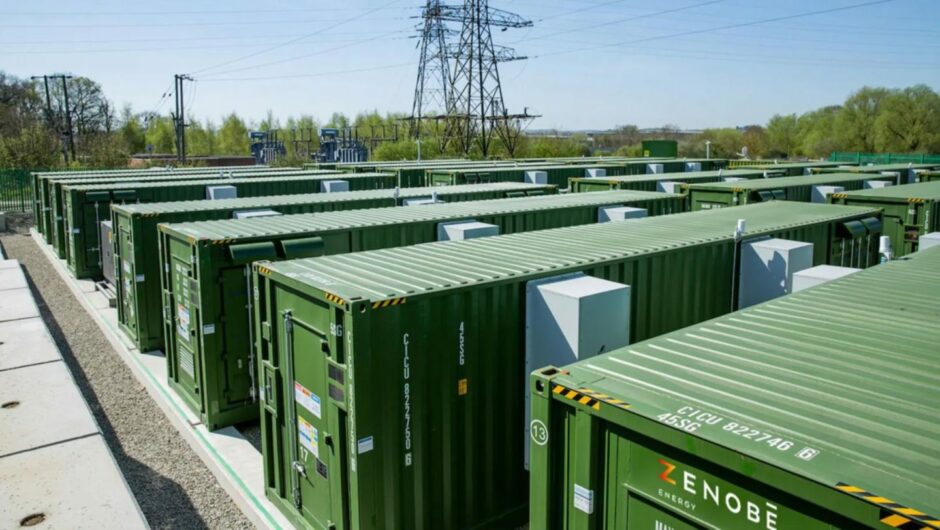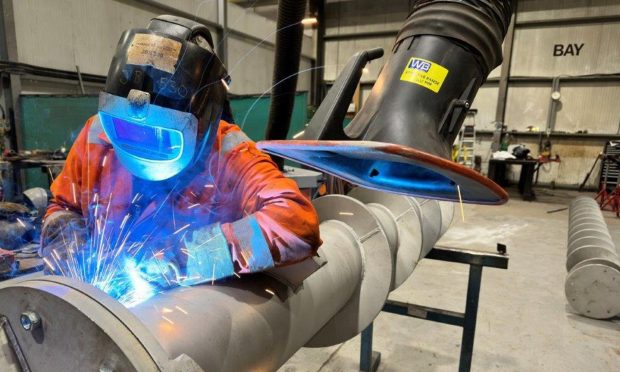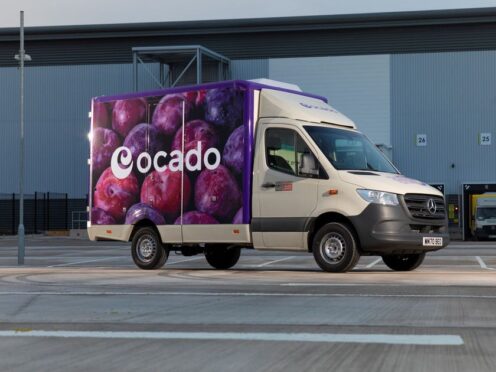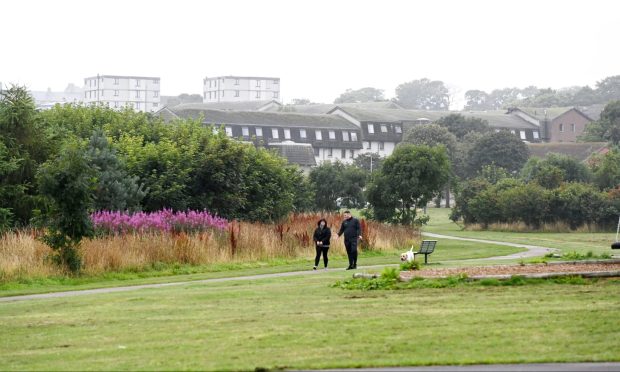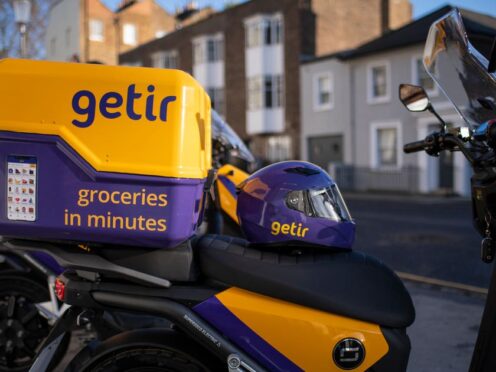Energy storage developer Anesco has received planning approval from Aberdeenshire Council to build its first battery storage project in Scotland.
The 50 megawatt (MW) project will be built close to the village of Rothienorman, north of Inverurie.
The site is the company’s first north of the border and forms part of its portfolio of more than 440MW of new solar and storage projects currently at the planning or ready to build stage in the UK.
Situated on low-grade agricultural land, the site lies in close proximity to the Rothienorman substation and once complete will comprise of 15 rows of batteries.
Work on the development is expected to get under way next year and to be completed in early 2024.
The installation will have a lifespan of 40 years, after which time the land will be returned to its natural state.
Battery to offer flexibility services
Anesco says it intends to make “significant ecological enhancements”, in pursuit of a net gain on biodiversity of almost 50%.
This includes planting of native trees along boundaries and down the length of the east side of the build site and the creation of a wildflower meadow. The remainder of the site will also be retained for agricultural use.
Once operational, the battery will offer flexibility services to National Grid, helping balance energy supply and demand and enabling more renewable energy to be stored and used when needed.
Anesco chief executive Mark Futyan said: “We’re delighted to receive approval for the Rothienorman battery site. Energy storage has a vital role to play in the UK’s transition energy network, providing the flexibility needed to support the growing number of clean power sources.
“As with all our sites, biodiversity is a key focus and we will be making significant improvements designed to support local wildlife throughout the lifetime of the project.”
The project is the latest in a series of developments set to be deployed across Scotland and the UK, as energy storage plays an increasingly important role in balancing electricity supply and demand.
That includes major plans by Amp Energy to build a Scottish Green Battery Complex – comprised of two of the largest battery storage facilities in Europe at strategically located sites in Hunterston on the Ayrshire coast, and Kincardine, north of Grangemouth on the river Forth.
These will consist of two 400-MW battery facilities, each providing 800 megawatt-hours (MWhr) of storage capacity and helping to ease transmission congestion more cost-effectively than major upgrades to infrastructure.
Work starts on further Scottish battery storage projects
Meanwhile Zenobe has begun construction on £750 million worth of battery storage projects across Scotland which it says will help save more than £1bn in curtailed offshore wind power.
The investment spans four sites at Blackhillock near Keith, Kilmarnock, Wishaw and Eccles, all chosen for their proximity to transmission networks.
The latter comprises the largest facility at 400MW/800MWh, followed shortly by Blackhillock and Kilmarnock at 300MW/600MWh, and Wishaw at 50MW/100MWh.
Construction at the Blackhillock site began this month with the first 200MW phase of the facility due to go live in some time in the first half of 2024. Other plants will follow in late 2024 and early 2026.
Founded in 2017, Zenobe operates both battery storage plants and electric vehicle fleets and infrastructure across the UK.
The latest build out takes its total portfolio in Scotland to 1050MW/2100MWh and equates to more than the total MWh of all grid-connected batteries operating in the UK today.
The company says that over their 15 years of operation, the sites are expected to avoid up to 13.4m tonnes of CO2. It’s the equivalent of taking 490,000 diesel or petrol cars – more than all cars in Glasgow and Edinburgh combined – off the road over that time frame.
The batteries are also forecast to lower consumers bills by over £1 billion by reducing the curtailment of windfarms over the same period.
Support renewables
All projects are contracted to provide stability services to National Grid Electricity System Operator (NGESO) support the influx of more renewables. They will operate under the first commercial contracts in the world to use transmission connected batteries to provide short-circuit level and inertia, essential for the grid to function efficiently as fossil fuel plants phase out.
Crucially, Zenobē will provide 4.4GVAs of inertia, equivalent to 5-10% of the UK’s total requirement.
Inertia is typically provided by spinning components such as steam or gas turbines, which rotate at the right frequency to help balance supply and demand and can spin faster or slower if needed. (This acts like shock absorbers in a suspension, which dampen the effect of a sudden bump).
However, renewable generation typically doesn’t provide this – and as large polluting power plants are switched off, more flexible solutions are needed to provide this function.
Drive growth in energy transition
NGESO head of networks Julian Leslie hailed the contract as a “turning point”, adding: “Investment into the use of new technologies by innovative companies like Zenobē is bringing this ambition nearer.
“The investment into these three major projects represents a turning point in how major grid scale battery storage can support the grid as fossil fuel generation is phased out.”
The Wishaw facility will be the first in Scotland to connect directly to the transmission network when it goes live in 2023.
Zenobē co-founder and director James Basden added: “Our projects at Blackhillock, Kilmarnock South and Eccles are world-firsts for battery storage, addressing a key, complex hurdle to the uptake of renewables in an innovative way and pushing forward our progress to energy independence and a zero-carbon grid.
“At a time of increasing energy prices and the need for greater energy security, this is the type of investment which the UK needs now to drive growth, and which will enable both the country and Zenobē to become leaders in delivering the energy transition.”
